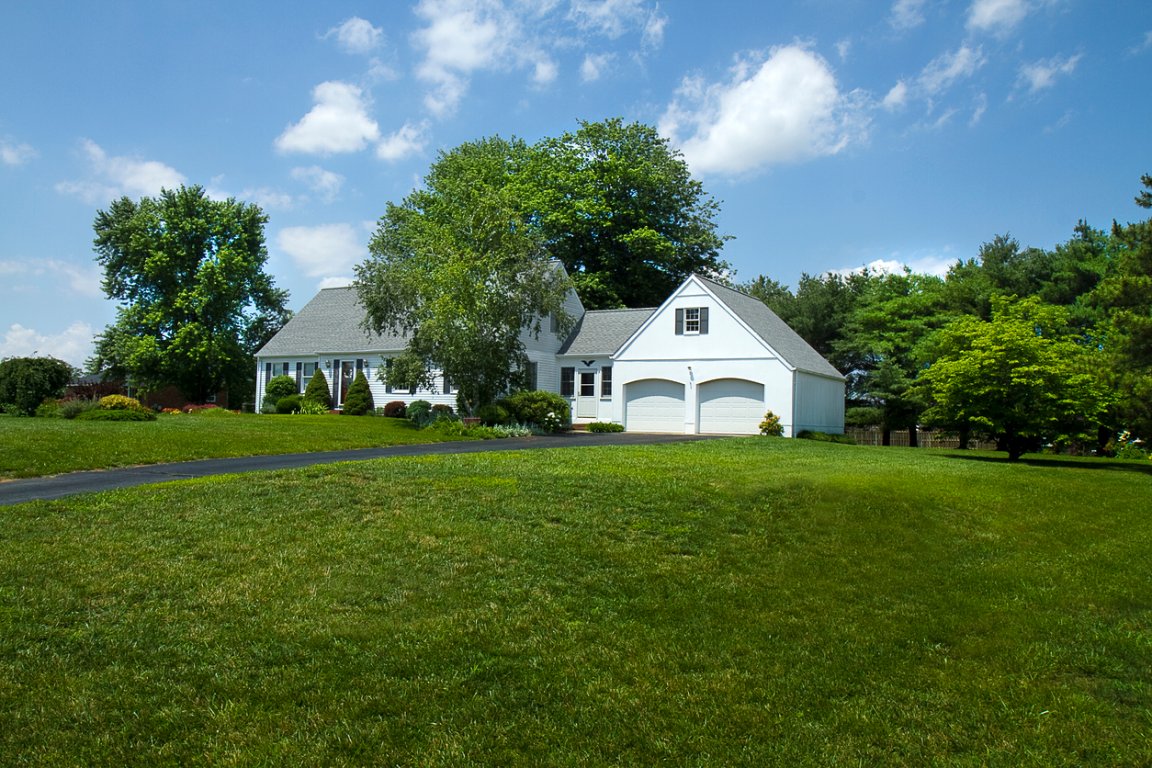We may earn revenue from the products available on this page and participate in affiliate programs. Learn More ›
Q: The grass in my yard—which is in partial shade since the trees around it have grown up, and on a slight slope—has been dying for the past several years. When I tried reseeding, the seed ran off the slope, and now small ravines are forming, which I think is due to erosion. Can you suggest some plants that will flourish while helping to control erosion?
A: You may be correct about your troubled turf! Erosion occurs when wind and/or water move across unprotected ground, removing soil particles. Left unchecked, erosion carves deep gullies and can undermine pavement, buildings, and other structures. When landscape trees mature, the grass beneath them gets shaded and may die off from lack of adequate sunlight. The lawn’s reduced root system and diminished grass expose the ground to stormwater runoff, a chief soil erosion culprit.
Fortunately, certain plants can be effective in preventing erosion on slopes of up to 33 percent (that’s 1 foot of elevation change for every 3 feet of horizontal distance), according to the Natural Resources Conservation Service (NRCS). (If your slope is steeper, consult a landscape architect for additional soil protection measures; slopes greater than 50 percent require structures like retaining walls.)
The best plants for erosion control are drought-tolerant, have extensive fibrous roots for sediment control, and have spreading foliage to slow the velocity of heavy rainfall.
Some of the plants suggested below may be ideal to bring life back to your yard—but before buying any, check the USDA plant hardiness zone map to ensure they can thrive in your area.
RELATED: 12 Lush Landscaping Ideas for a Hilly Backyard
Replace declining sun-loving grass with shade-tolerant lawn grass.
You may not need to give up grass if you can find a species better suited to your conditions. The right type of grass is perfect for erosion control on mild slopes because it provides a dense root mass and tough foliage that holds up well under foot traffic. For shade tolerance, one good choice is fescue (Festuca spp.), available at garden stores and landscape suppliers in both seed blends and as sod. Seed is less expensive and easy to install but takes four to six weeks to grow in. Sod gives immediate coverage but requires more time for preparation and installation. Fescue is suitable for USDA hardiness zones 3 through 7.

Plant Pachysandra for broadleaf, evergreen ground cover with erosion control.
Japanese spurge (Pachysandra terminalis) forms a glossy, broadleaf, evergreen carpet that controls soil erosion in shady areas. It stays under 10 inches tall, spreads well beneath trees but does not climb, and gives a subtle display of creamy white flowers in early summer. Plant this ground cover at 6- to 8-inch spacing for coverage within a growing season. It’s suited to USDA zones 3 through 9.
Ostrich fern spreads quickly to cover shady areas.
Beautiful and robust ostrich fern (Matteuccia struthiopteris) is a great erosion control plant for low-light graded areas. Roots spread quickly to cover bare, shady slopes with elegant 3-foot-tall, vase-shaped plants. An added bonus is that deer won’t eat it. Space plants 3 feet apart in USDA zones 3 through 8.

Shrubby St. John’s wort protects wet slopes and flowers in the shade.
Native to eastern North America, where it shrubby grows naturally in sandy open woods and meadows, shrubby St. John’s wort (Hypericum prolificum) is widely adaptable to different soil conditions, but does consistently well on wet slopes or where periodic flooding occurs. Plant it in partial sun to shade at 3 feet apart to grows into a low 3-foot mound with glossy blue-green foliage and showy yellow flowers. It’s suited to USDA zones 3 through 8.
Creeping plum yew covers large, partial shade areas quickly.
Creeping plum yew (Cephalotaxus harringtonia ‘prostrata’) is one of a few shade-tolerant conifers. This low, spreading, evergreen shrub reaches one to 2 feet tall and spreads three to 4 feet wide in just a season or two. It features dense growth that beautifully fills landscape beds with a solid mass of glossy, deep green, fern-like foliage. Plant spaced 4 feet apart in USDA zones 6 through 9.

Plant creeping phlox on sunny slopes for erosion control with a pop of spring color.
A carpet of pink, purple, red, or white flowers each spring makes creeping phlox (Phlox subulata) one of the showiest plants for erosion control. This hardy perennial has been used for generations to beautify steep banks and arm them against erosion. It stays low (under 6 inches) and spreads at a moderate pace. Space plants 12 inches apart for complete coverage within a season in USDA zones 3 through 9.
Protect sunny landscape beds with ornamental grasses.
Ornamental grasses feature extensive fibrous roots, excellent drought tolerance, and lush foliage. Muhly grass (Muhlenbergia capillaris), a widely distributed native North American perennial grass, boasts beautiful cotton candy-like pinkish bloom spikes that rise above the foliage in fall. In winter dormancy, bronze foliage adds structure and motion to the landscape. Cut back in early spring to make room for fresh new foliage. Plant Muhly grass at a 3-foot spacing in USDA zones 6 through 10.
Plant masses of cotoneaster for flowers, foliage, and fruit in full sun.
Cotoneaster (Cotoneaster spp.) protects sunny slopes while offering year-round interest with tiny white flowers, glossy green foliage, and red berries—making it ideal for pollinators and birds. Choose from several species for erosion control: Bearberry cotoneaster (C. dammeri) grows one to 2 feet tall and 6 feet wide, Rockspray cotoneaster (C. horizontalis) grows two to 3 feet tall and 6 to 8 feet wide, and willow leaf cotoneaster (C. salicifolius) grows two to 3 feet tall and 5 to 6 feet wide. Branches grow roots where they touch the soil, adding even more soil protection. Space plants 5 to 6 feet apart in USDA zones 5 through 8.

